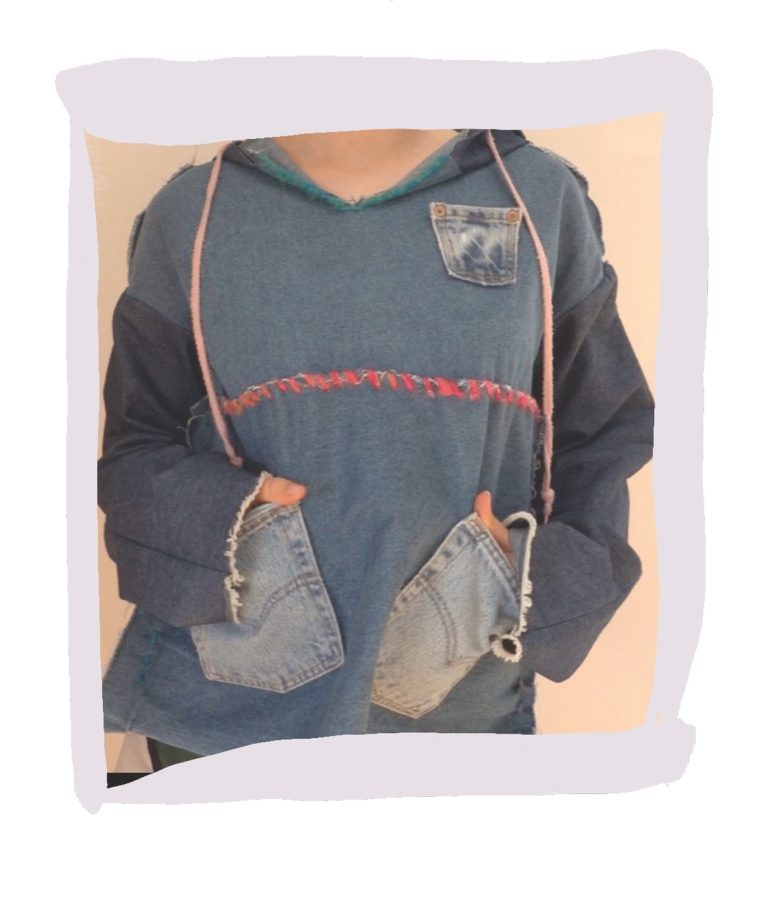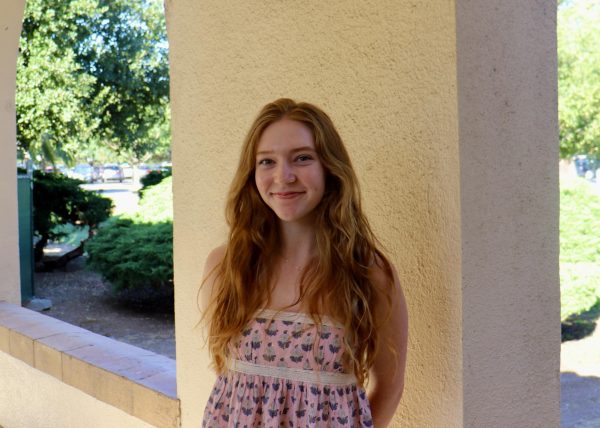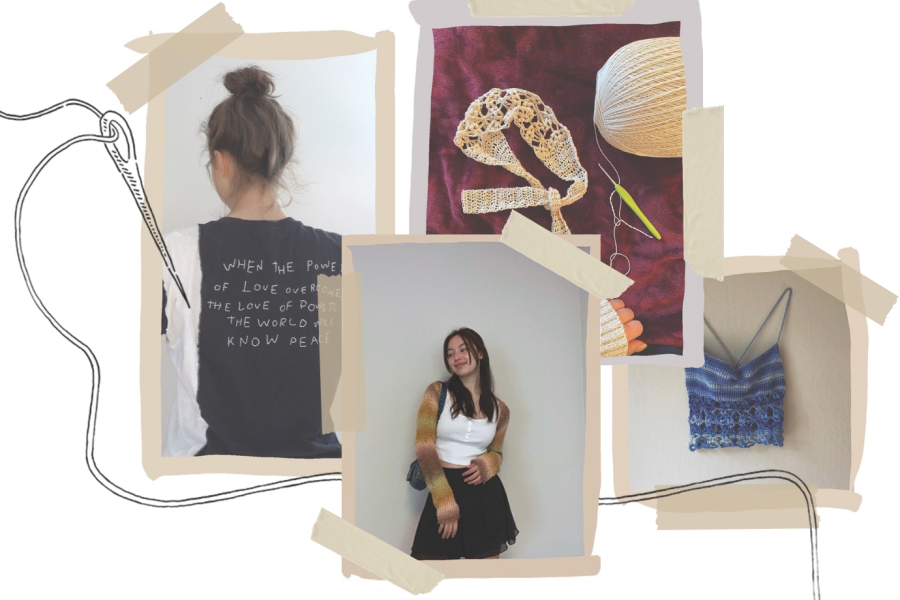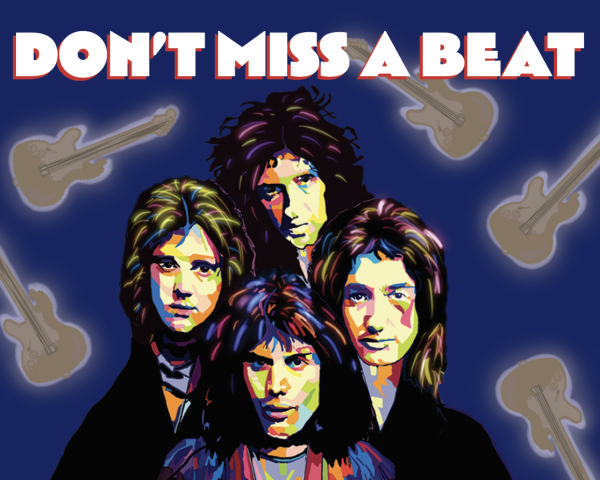A Common Thread
Crafted by hand, clothes are a powerful form of self expression
When articles of clothing are made by hand, they are truly one-of-a-kind. From idea to thread, many Paly students enjoy crafting unique clothing pieces into creation.
Historically, fashion has served as a vital form of self-expression for many people. Some Paly students, such as senior Morgan Greenlaw, have taken this self-expression to the next level by creating their own clothes.

“Wearing clothes is a great way to express yourself and then to have made it yourself you can really think of how you want to feel in that piece of clothing,” Greenlaw said.
Not only is handmaking clothes a mean of expression, but also a more affordable and accessible option. By making their own clothes, students can tailor the item in question to their unique tastes and measurements. For junior Asha Kulkarni, co-president of the Paly Yarn and Fabric club, sewing allows her to make clothes exactly to her size.
“I’m pretty small so it’s hard to find clothes that fit me,” Kulkarni said. “It’s nice to be able to make my own clothes [that will fit].”
Others gravitate towards making their own clothes to save costs while unleashing their creative side. Ines Legrand, a Paly senior, started out her sewing journey from a sewing machine gifted to her by her dad. Since then, she has expanded to creating clothing pieces to reinvent her wardrobe.
“I try to recreate things that have a higher price tag,” Legrand said. “[Sometimes] I’m just totally unwilling to pay that kind of money for it, or I can’t just find a store [that sells the piece].”
For many, the process starts with inspiration, sometimes through Pinterest or online stores, or other times the natural world.
“I’ll be out in nature and there’s a lot of good combinations of colors out in the marsh,” Paly junior Coral Johnson said. “I’ll see it and I’ll [think] ‘Oh wow, that’s a really cool color combo.’”
The next step involves deciding on threads and fabric, typically found at Joann’s Fabric store or niche shops in San Francisco. Individual preferences on the material of clothing pieces shape which thread crafters choose to use. Thus, the material of thread is vital to consider when constructing clothes, whether it is plastic, cotton, or natural fibers. Crafters then find patterns online or create their own. In other cases, when there are no patterns used, people retrace loved clothing onto fabric.

“Over the pandemic, I made a denim jacket,” Greenlaw said. “I had two different types of denim and I traced a jacket that I had that fit me well.”
Greenlaw proceeded to sew thick, knitting wool into layers of denim fabric, ultimately creating a patchwork piece.
“It took a long time,” Greenlaw said. “But I think it was worth it because I really liked the pop of color. I [also] had some older shorts that I took the pockets off of and then sewed on.”
Creating your own clothes is an incredibly rewarding experience. To see an item transform from an idea, to threads, to a piece one can wear is gratifying. Legrand shares this sentiment with one of her earliest creations, a Hawaiian shirt.
“Even though the seams [of the shirt] are really bad and I look at it and [think], ‘That is rough’, I’m so proud of it,” Legrand said. “It’s one of the first things [I made] and I also freehanded the pattern.”
While there are many successes that come with hand making one’s own clothes, failure is also part of the process.
“There’s only two items that I made that I actually like,” Greenlaw said. “I’ve made so many things before that.”
Nonetheless, people find the motivation to continue making their own clothes through their failures.
“I think it’s cool when somebody asks you, ‘Hey, where’d you get that?’ and you’re like, ‘Oh, I made it,’” Greenlaw said.
Photos courtesy of Morgan Greenlaw and Coral Johnson

2022-2023 Staff Writer
2023-2024 Managing Editor
I joined C Magazine because I'm super passionate about arts, culture, music, design, and everything...

2020-2021 - Staff Writer
2021-2022 - Staff Writer
2022-2023 - Managing Editor
I joined C Mag because of the focus on arts and representing our...







